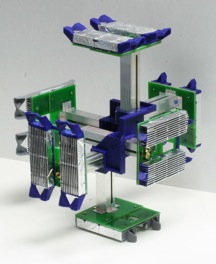
N.John Habraken's work on design methods starting in the 1960s, Simon's influential Sciences of the Artificial, Alexander's Notes on the Synthesis of Form, and many subsequent works make a compelling case that there are commonalities in method that cross specific design domain boundaries. How does designing "work", and how can (systematic) processes of design be articulated, elucidated, and evaluated? Rather than viewing design simply as creative expression of individuals, or optimizing an objective function, research in design methods propose ways that designers (whether individuals, groups, or computer programs) can describe design spaces, generate alternatives within those spaces, and evaluate those alternatives with respect to explicit criteria. See Now More Than Ever: computational thinking and a science of design.

modular robotics promises a world of new, smart, self-reconfiguring materials made of millions of tiny robots that collaborate to shift shape and take new forms. In addition to the engineering challenges of building the robots, the programming language challenges of designing ways for a robot ensemble to carry out a task, modular robotics also poses new challenges in interaction: how will people interact with a world made of computationally enabled materials, and how will designers of things made of programmable matter describe the forms and behavior that these materials are to take. How, for example, would we interact with a building that is made of many little robots?

computationally enhanced construction kits & craft: The toys we play with as children shape the grown-ups we become. Construction kits like Lego® and Tinkertoy were the materials of making for past generations; in the future, kits can embed computational behavior. The Posey and roBlocks kits exemplify one way in which to embed comptuation into toys: through sensors, actuators, and microcontrollers in the toy pieces. The Furniture Factory, FlatCAD and Paper Robots projects exemplify new kinds of craft activities that tomorrow's children will enjoy. A five-year ITR project with Mike Eisenberg of the Craft Technology Group at University of Colorado investigated this design space.

tangible interaction:With the embedded/ubiquitous/invisible/pervasive computing revolution, interacting with computers, the traditional domain of "human computer interaction" now blends with the traditional domains of architecture and design, buildings, places, and things. As the physical world is increasingly imbued with computational, programmable properties, how do we design for effective interaction, and how can citizens (so-called "end users") be empowered to program the behaviors of their physical environments for themselves?